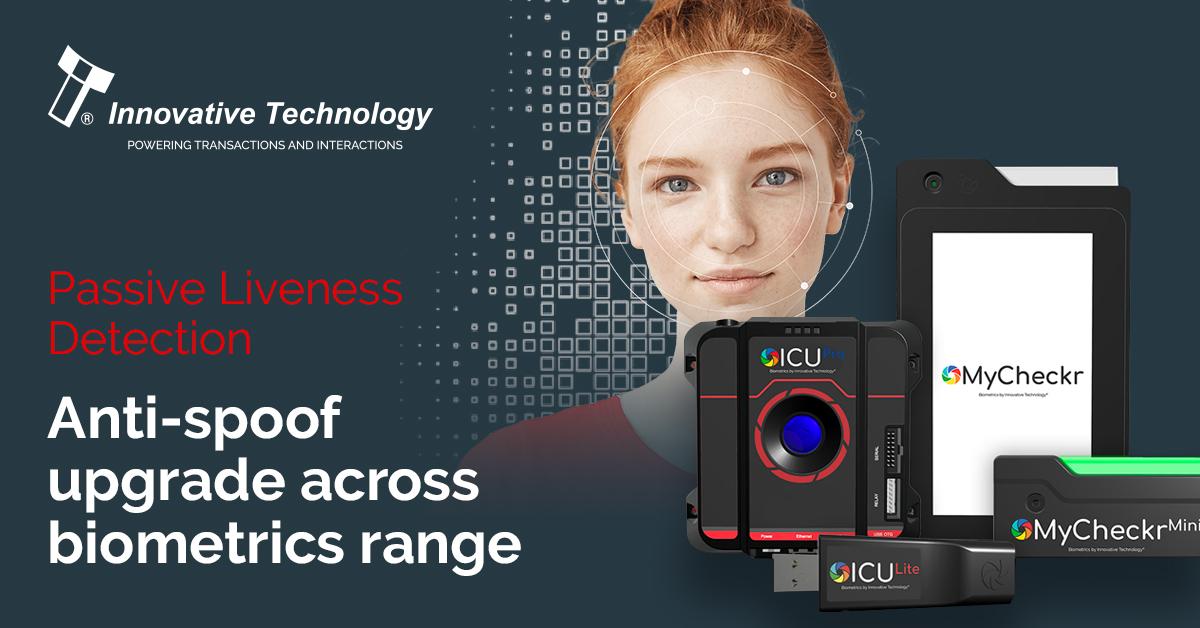Search by product, support information & more
Most popular searches:
Search for "PA00185"Read our Latest Blogs >
Click here for Technical Support >
We’ve got a new look! Please note: all users need to re-register to take advantage of our new website functionality
Innovative Technology’s (ITL) range of biometric products can be used for age estimation and access control applications. With the increasing deployment of biometric technology in many sectors to validate information or identity people, the need to detect any fraud attempts or ‘spoofs’ intended to fool the system is vital. ITL have recently upgraded their full biometrics range with a unique fraud detection technique.
Commenting on the upgrade, Andrew O’Brien, Product Manager – Biometrics said, “When providing facial analysis devices that can accurately estimate age and give secure access control, it is crucial to ensure that any person trying to trick the system is immediately identified and all processing halted. Presentation Attack Detection or PAD, is the comprehensive approach to spoof-detection which includes anti-spoofing/liveness detection technologies, designed to identify a valid face and reject any invalid faces. Fraudsters can use a photo, video, 3D model or any substitute for a live person’s face to deceptively purchase age restricted goods or wrongfully gain access to restricted areas.”
There are two main types of Facial Liveness Detection. Firstly, active Liveness Detection whereby a user actively needs to confirm their presence by interacting with the system as part of the process. This technique can be seen as intrusive in that it disrupts and prolongs the end-user experience. The second type is Passive Liveness Detection. This method does not require any specific actions from the user and is often referred to as non-intrusive, as the process for the end user is seamless. It can use either single or multiple images and the user is unaware that the liveness check is happening.
Giving more detail on the upgrade, Andrew commented, “Our approach to anti-spoof detection uses single-image passive liveness detection. We have built, trained and tuned our own neural networks using an extensive data sample containing millions of images, to create an in-house, bespoke PAD technique. Using multiple parameters to analyse the full scene, we can determine a genuine subject or conversely identify potential fraudulent activity. The same frame used for facial analysis is also used for spoof detection, resulting in minimal processing. By not having a separate dedicated method for spoof detection, fraudsters have no information on how the technique operates, making it more secure. Many organisations use a third party to supply their spoof detection technology, for an additional fee, but our products have this included. With only a single USB camera and no additional hardware, our solutions give accurate and reliable results in real-time.”
Concluding Andrew said, “It is understandable for organisations, especially SMEs, to worry about investing in biometric solutions with the technology still in its infancy. Therefore, we have decided to include our anti-spoof technology as standard and at no additional cost. Facial analysis has a huge opportunity in bringing positive benefits to businesses in various vertical sectors and with our low-cost edge devices our customers have world class accuracy in performance, complete control on costings and now added confidence and security in relation to attempts to defraud the system.”
